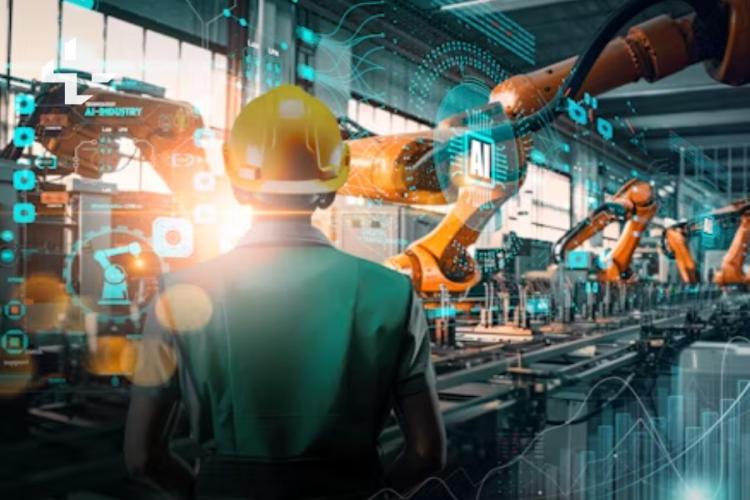
As artificial intelligence reshapes industry, India faces a policy challenge—how to drive innovation without leaving its workforce behind. As AI adoption accelerates across sectors like FMCG, information technology, agro-processing, and healthcare, Chief Economic Adviser V Anantha Nageswaran has issued a timely reminder: the rise of machines should not eclipse the role of humans. business summit, he said AI deployment must not be a default path to displacing human labour but a policy-guided choice that integrates it.
His argument is straightforward, but urgent—India cannot afford to sacrifice job creation in its pursuit of technological advancement. “We must be deliberate about where we stop training artificial intelligence to do everything end-to-end,” Nageswaran noted, citing a recent study by a Berkeley-based artificial intelligence researcher. India’s growth trajectory, he argued, demands increased competitiveness and productivity. That, in turn, necessitates deeper investment in artificial intelligence engines and GPUs. But such tools should complement—not cannibalise—the human workforce.
READ | From poverty to precarity: India’s uneven growth story
Productivity or employment: A false binary
India continues to lag behind global leaders in marginal and labour productivity. Countries like South Korea have selectively embraced automation to raise productivity, but this has often come at the cost of job creation. India, too, must boost product quality and cost-effectiveness to compete globally. Yet this cannot come at the expense of employment. At least eight million new jobs need to be created annually—excluding agriculture—to keep pace with the expanding labour force.
The answer, Nageswaran argues, lies in strengthening labour-intensive manufacturing, which relies more on human effort than on expensive automation or capital-intensive machinery. From hand-stitched garments and handicrafts to small-scale crop harvesting, these industries thrive on skill and effort rather than machines. They also offer a vital lifeline to unskilled and semi-skilled workers—a segment that will only grow in coming years.
Yet this sector remains vulnerable. The pandemic dealt a blow to many labour-intensive industries, dragging them back to pre-COVID levels. Disrupted supply chains, high shipping rates, and rising international freight costs particularly affected exports in textiles and gems and jewellery.
A 2024 joint report by the International Labour Organisation and the Institute for Human Development stressed that there is no viable alternative to labour-intensive growth—at least for the next decade. With 7–8 million young people entering the workforce each year, industries that can absorb large volumes of unskilled labour remain crucial. In a country marked by deep income and education inequalities, labour-intensive sectors offer one of the few paths to inclusive, scalable, and sustainable growth.
AI disruption with a double edge
India’s digital ecosystem—comprising tech start-ups, platform-based gig work, and widespread mobile access—positions the country well to tap into AI’s benefits. The demographic window of opportunity is also still open, with 23% of the population projected to remain under 25 years of age in 2036, only a modest drop from 27% in 2021.
However, the quality of youth employment remains a concern. Much of it is informal, underpaid, or precarious. As artificial intelligence continues to evolve, it threatens to automate many back-office and repetitive roles—especially in sectors like finance, customer support, and IT-enabled services. These are areas where India has traditionally enjoyed a global edge.
But the picture is not entirely bleak. When properly integrated, artificial intelligence can also enhance productivity and incomes even for low-skilled workers—by improving service delivery, supporting digital tools for artisans, or enabling smarter logistics in agriculture. The key is to treat artificial intelligence not as a job destroyer, but as an enabler—if backed by adequate training, safety nets, and policy foresight.
Avoiding the middle-income trap
The bigger policy challenge, then, is to balance two competing imperatives: boosting capital-intensive growth to raise productivity, and creating labour-intensive livelihoods to preserve socio-economic stability. This tension lies at the heart of India’s current development model.
Worryingly, profitability in Indian industry is growing faster than capital formation and worker compensation. If this divergence continues, household consumption will eventually suffer, dampening the very demand that drives industrial growth. A narrow focus on capital-intensive expansion risks pushing India toward a middle-income trap—a situation where growth stagnates before full economic maturity is reached.
At a per capita income of $2,800, India still lags well behind developed nations. Without addressing income disparities and creating widespread employment, the ambition to become a developed country remains aspirational rather than achievable.
A strategy for inclusive growth
To avoid this fate, India must actively channel investments into labour-intensive sectors—particularly textiles, food processing, construction, and MSMEs. This would not only create jobs, but also contribute to poverty reduction, income redistribution, and long-term national wealth.
Doing so will require a coordinated strategy involving the government, the private sector, and trade policy reform. With the right mix of incentives, training, and infrastructure support, India can leverage its demographic dividend to power a new phase of inclusive growth.
Artificial intelligence is undoubtedly a transformative force—but its promise must not come at the cost of millions of livelihoods. India’s future will depend on how well it manages this tightrope walk between automation and employment, between disruption and inclusion.
